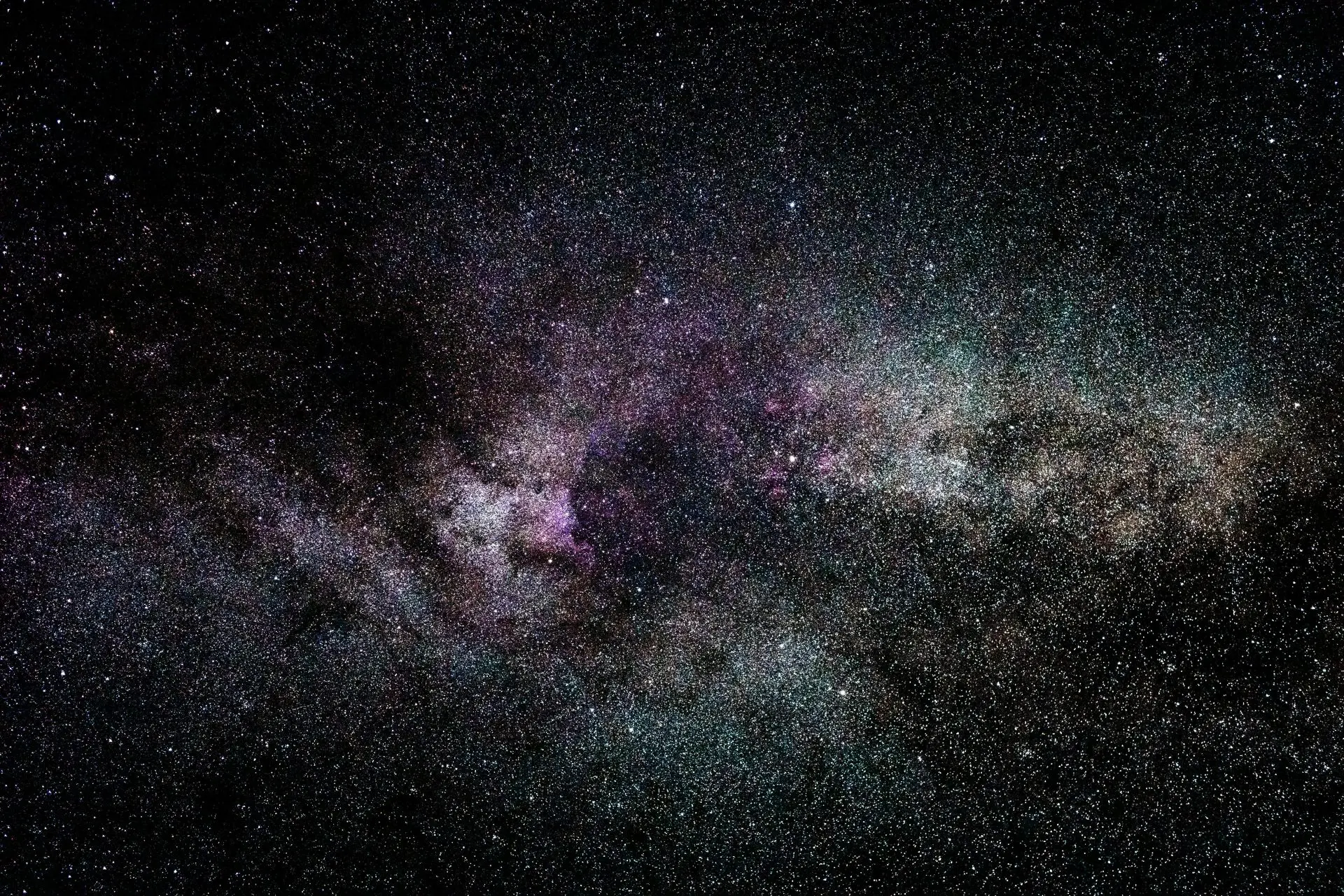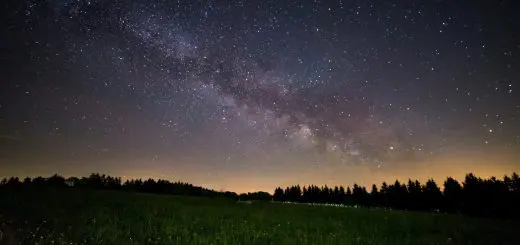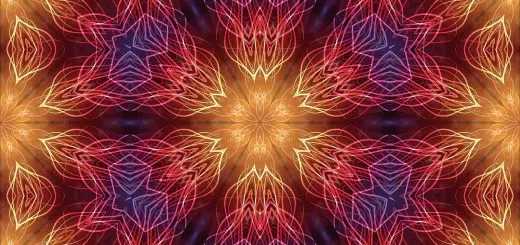How Wildlife Photography Has Changed Conservation Efforts

Looking for more amazing products? Check out our online store and explore our collection here! Happy shopping!
Before diving in, please note: This post is for informational purposes only. If you’d like to know more about how we approach topics, feel free to check out our friendly Disclaimer Page.
Hey there, amazing readers! 
We’re committed to delivering quality posts, and your support (even just sticking around despite the ads) means everything to us. So, bear with us, and thanks for helping us keep the good vibes rolling. Now, on to the fun stuff!
TRANSLATE BUTTON AT THE END OF THE ARTICLE
A Quick Overview
Wildlife photography has become a crucial component in the realm of conservation, shaping how we view and protect our natural world.
From breathtaking images of majestic animals to candid shots of a tranquil ecosystem, these photographs don’t just capture beauty; they play a significant role in fostering awareness and driving change.
In this article, we’ll dive deep into how wildlife photography has transformed conservation efforts, making it not just an art form but also a powerful tool for environmental stewardship.
The Rise of Wildlife Photography in Conservation
Wildlife photography has evolved significantly over the last few decades.
Early conservation efforts were often bogged down by a lack of public interest.
However, the emergence of wildlife photography as a popular form of media began to change that.
Photographers like Ansel Adams and Jane Goodall brought nature into people’s living rooms, sparking interest and respect for wildlife.
Today, renowned photographers such as Paul Nicklen and National Geographic contributors have become household names.
Their iconic images have the ability to evoke strong emotions and inspire action.
The rise of platforms such as Instagram and Pinterest has further fueled this trend.
Amateur and professional photographers alike share their work, showcasing the incredible diversity of life on our planet.
This democratization of photography has allowed a wider range of voices to contribute to the narrative of conservation.
Moreover, wildlife photography festivals and competitions have sprung up globally, celebrating the art form while simultaneously raising awareness about conservation issues.
These events highlight the essential relationship between compelling imagery and ecological education, encouraging new photographers to join the movement.
Scientific research has also benefited from the growth of wildlife photography.
Many studies now include visual documentation to complement data, making research accessible to a broader audience.
This visual aspect fosters a stronger connection between the public and scientific findings.
As wildlife photography continues to rise in prominence, conservation organizations are leveraging its power to inspire collective action.
This partnership marks a shift in how conservation is approached—moving from a purely scientific endeavor to a more emotionally driven campaign.
Capturing Nature: The Art and Science Combined
Wildlife photography is a delicate dance between art and science.
Capturing an image of an elusive creature requires a keen understanding of both the animal’s behavior and the environment.
Photographers must be patient and observant, often spending hours, if not days, in the field to document a single moment.
This commitment reflects a deeper appreciation for wildlife and their habitats.
It’s not just about pressing the shutter; it’s about understanding the intricate web of life.
On the artistic side, photographers use composition, lighting, and color to create stunning visuals that can tell a story.
A well-framed shot of a polar bear on a shrinking ice cap can evoke feelings of urgency and concern.
The art of photography becomes a conduit for relaying critical messages about the state of our planet.
Technology plays a crucial role as well.
Modern cameras, lenses, and editing software allow photographers to enhance their work and reach audiences effectively.
Discover "Dog Care: Learning How to Care for Your Furry Friend
"
Whether it’s using drones to capture birds in flight or telephoto lenses to document wildlife from a distance, these tools help bridge the gap between art and scientific observation.
Moreover, educational institutions are beginning to offer courses that merge photography with conservation biology.
Students learn to see through the lens of a camera while also understanding the ecological implications of their work.
This hybrid approach ensures that future photographers are equipped to use their talents for the greater good.
Ultimately, wildlife photography serves as a reminder of the beauty and fragility of nature.
It encourages us to look closer, not just at the striking images, but at the stories they tell and the actions they inspire.
How Cameras Became Allies in Conservation Efforts
Cameras have transformed into powerful allies in conservation, helping to monitor and protect endangered species.
Trail cameras, for instance, are now commonplace in many protected areas.
These remote cameras capture images of wildlife without human interference, providing valuable data on species distribution and behavior.
Organizations can monitor animal populations in real-time, assessing their health and movements without disturbing their natural habitats.
This non-intrusive method allows researchers to gather crucial information needed for effective conservation strategies.
Additionally, these cameras can deter poaching.
The mere presence of surveillance technology acts as a deterrent, making it harder for poachers to operate undetected.
By using wildlife photography as a monitoring tool, conservationists can safeguard vulnerable species more effectively.
Cameras are also vital in educational outreach.
Conservationists can share these images with local communities, engaging them in the protection of their own ecosystems.
When people see the wildlife that inhabits their environment, they often feel a sense of ownership and responsibility.
Furthermore, citizen science initiatives have leveraged the power of photography.
Platforms like iNaturalist allow anyone to submit wildlife photos, contributing to a global database of species observations.
This community-driven approach has expanded the scope of conservation efforts, enabling people from all walks of life to participate.
In essence, cameras have become indispensable tools in the fight for wildlife preservation.
They provide us with a window into the natural world, fostering understanding and appreciation for the myriad species that share our planet.
From Film to Digital: A Revolution in Wildlife Photos
The transition from film to digital photography has been nothing short of revolutionary for wildlife photographers.
Gone are the days of waiting for film to develop, only to discover that a critical moment slipped through the cracks.
With digital photography, instant feedback allows photographers to adjust their settings and capture the perfect shot on the spot.
This immediacy not only improves the quality of images but also enables photographers to experiment and innovate in their craft.
Digital cameras also offer increased flexibility with editing.
Photographers can enhance their images, fine-tuning them to tell a better story without compromising authenticity.
This ability to manipulate visuals opens the door to creative expression, allowing artists to convey messages that resonate with audiences.
Moreover, the cost-effectiveness of digital photography has made it more accessible to budding wildlife photographers.
With the expense of film and development behind us, aspiring photographers can practice and refine their skills without breaking the bank.
Another significant advantage is the ability to share images instantly across various platforms.
Social media has become the new gallery for wildlife photography, allowing artists to showcase their work to a global audience.
This visibility fosters collaboration and dialogue among photographers, conservationists, and the public.
The digital era has also seen the rise of video content.
Photographers can document not only still images but also the dynamic behaviors of wildlife, creating immersive experiences for viewers.
This rich storytelling format captivates audiences and drives home the importance of conservation.
As the medium continues to evolve, wildlife photography remains at the forefront of conservation efforts.
Digital tools empower photographers to push boundaries, ensuring that our connection to nature stays alive and vibrant.
The Power of Visual Storytelling in Conservation
Visual storytelling is a compelling way to convey complex conservation issues.
An image can communicate emotions and narratives that words sometimes fail to express.
A striking photograph of a deforested area can evoke sadness and urgency, prompting viewers to act.
Wildlife photography captures moments that tell stories—stories of survival, resilience, and the intricate balance of ecosystems.
These visual narratives create empathy, encouraging people to feel connected to the plight of endangered species and their habitats.
Documentaries and photo essays bring together visuals and narratives in a powerful way.
They can transport audiences to remote locations and immerse them in the beauty of nature while highlighting urgent conservation issues.
For instance, a documentary featuring the migration of the monarch butterfly can inspire viewers to protect their habitats.
Organizations are increasingly using visual storytelling in their campaigns.
By sharing authentic images of the animals they protect, these groups create a strong emotional pull.
This connection drives people to engage and support conservation efforts, whether through donations or volunteer work.
Photographers often collaborate with NGOs to craft visual narratives that resonate with the public.
These partnerships result in compelling campaigns that raise awareness about critical issues, such as climate change or habitat destruction.
Moreover, storytelling doesn’t end with the image itself.
Accompanying captions and narratives provide context, enhancing the viewer’s understanding of the issues at hand.
This combination creates a holistic approach to conservation communication.
In the end, visual storytelling through wildlife photography serves as a bridge, connecting people to nature and inspiring them to take action.
The stories we tell through images can change the world, one photograph at a time.
Engaging Audiences: Wildlife Images That Inspire
Wildlife images have a unique ability to engage and inspire audiences.
When we see a breathtaking shot of a lion lounging under the African sun or a colorful coral reef teeming with life, it sparks curiosity and admiration.
These images can foster a sense of wonder that compels viewers to learn more about the species and their environments.
This curiosity can lead to deeper involvement in conservation efforts, whether through educational programs, volunteering, or donating to relevant causes.
Social media has amplified the reach of wildlife photography.
Platforms like Instagram and Facebook showcase stunning visuals, making it easier than ever to share the beauty of nature.
Shares and likes can help raise awareness about pressing conservation issues, turning casual viewers into passionate advocates.
Photographers often use their platforms to educate their audience about the importance of conservation.
They might share facts about the species they photograph or the threats these animals face.
This combination of art and education is a powerful catalyst for change.
Contests and challenges encourage photographers to capture specific themes—like endangered species or habitat conservation.
These initiatives not only celebrate creativity but also promote awareness around these urgent issues.
Workshops and educational programs led by wildlife photographers further engage audiences.
Participants learn not only photography skills but also the importance of conservation, fostering a community dedicated to protecting the natural world.
In essence, wildlife images have the power to ignite passion and drive change.
By engaging audiences through stunning visuals, we can create a global movement for conservation, inspiring future generations to cherish and protect our planet.
Social Media: Amplifying Wildlife Conservation Voices
Social media has revolutionized how we share and discuss wildlife conservation.
It provides a platform for photographers and conservationists to amplify their voices, reaching vast audiences with a click.
Platforms like Instagram, Twitter, and Facebook connect people passionate about wildlife and conservation.
Photographers can share their work, engaging followers with captivating stories and stunning visuals.
A single post can reach thousands, if not millions, igniting conversations about pressing conservation issues.
Nonprofits and organizations have seized this opportunity to raise awareness.
By sharing impactful images and videos, they inform the public about their work and the challenges facing wildlife.
Campaigns like #WildlifeWednesday and #SaveTheWild encourage users to share their photos and stories, creating a collective voice for conservation.
Moreover, social media allows for real-time updates.
When a significant conservation success or setback occurs, organizations can share the news instantly.
This transparency fosters trust and encourages community involvement in conservation efforts.
Influencers and celebrities also play a role in amplifying conservation messages.
When someone with a large following shares a wildlife photograph or conservation message, it can lead to increased support and awareness.
Their influence can drive home the importance of protecting our planet.
Social media has also facilitated grassroots movements.
Activists can organize campaigns, protests, and funding initiatives with unprecedented ease, rallying support across different platforms.
The power of a hashtag can mobilize communities and create significant change.
In short, social media is a powerful tool for wildlife conservation.
It connects individuals, organizations, and communities, creating a global network dedicated to protecting our planet.
Through collaboration and shared stories, we can amplify our voices and drive meaningful change.
Educating the Masses Through Stunning Wildlife Imagery
Education is a vital component of conservation, and wildlife imagery serves as an excellent pedagogical tool.
Beautiful photographs can captivate audiences, drawing them into the subject matter and making complex issues more digestible.
Schools and educational institutions are increasingly incorporating wildlife photography into their curricula.
Engaging visuals can capture students’ imaginations, making lessons on ecology and conservation more relatable.
Imagine a classroom filled with awestruck students as they explore the life of a snow leopard through vibrant images.
Exhibitions and galleries dedicated to wildlife photography provide educational opportunities, too.
They often include informative panels alongside the photographs, offering insights into the species and the challenges they face.
Attendees leave not only inspired by the beauty of nature but also armed with knowledge that can lead to action.
Documentaries and multimedia projects utilize wildlife imagery to educate broader audiences.
They weave together storytelling, captivating visuals, and expert commentary, creating a compelling case for conservation.
One moment in a documentary can change perceptions and inspire audiences to care about environmental issues.
Public campaigns that focus on wildlife photography can spark conversations.
By showcasing striking images in public spaces, like train stations or city centers, these campaigns catch people’s attention and encourage them to consider the impact of their actions on wildlife.
Wildlife photographers often serve as educators themselves.
Through workshops and online tutorials, they share their skills while imparting the significance of conservation.
They teach participants how to capture the beauty of wildlife and the importance of protecting it.
In essence, wildlife imagery is a powerful tool for education.
It informs, inspires, and connects us to the natural world, making it an invaluable asset in conservation efforts.
Wildlife Photography: A Tool for Fundraising Success
Wildlife photography has proven to be an effective fundraising tool for conservation organizations.
Stunning images can capture the hearts of donors, turning their compassion into financial support for wildlife protection initiatives.
Gala events and auctions often feature beautiful wildlife photos, attracting bids that can significantly fund conservation projects.
A striking image of a rare species can fetch thousands of dollars, directly contributing to protection efforts.
This creates a win-win situation for both artists and organizations.
Online crowdfunding campaigns that utilize wildlife photography can also be highly successful.
By sharing captivating visuals, organizations can create compelling narratives that engage supporters.
When people see the beauty of what they’re helping to protect, they’re more likely to contribute.
Social media platforms allow organizations to showcase their work through photography while encouraging donations.
Campaigns like "Sponsor a Species" can benefit from impactful visuals that highlight the animals needing support.
This calls for both engagement and financial backing.
Additionally, wildlife photography calendars and books offer tangible products that can raise funds for conservation.
These items not only showcase the beauty of wildlife but also spread awareness about the critical issues they face.
Collaborations between photographers and nonprofits can amplify fundraising efforts.
By showcasing the work and mission of an organization through powerful imagery, photographers can help their cause while building their portfolio.
In the end, wildlife photography serves as a bridge between art and fundraising.
It connects people to nature, inciting empathy and prompting action that directly benefits conservation efforts.
Collaborations: Photographers Partnering with NGOs
Partnerships between wildlife photographers and non-governmental organizations (NGOs) have become increasingly common.
These collaborations leverage the strengths of both parties—photographers bring artistic vision and storytelling prowess, while NGOs provide expertise and resources for conservation.
By working together, photographers can document the vital work that NGOs are doing on the ground.
These images not only serve as a visual record but also as powerful tools for advocacy, inspiring others to join the cause.
When a photographer accompanies a research team into the field, they can share firsthand experiences through striking visuals.
These experiences can be translated into compelling narratives that resonate with the public, creating a deeper understanding of the challenges facing wildlife.
Many NGOs rely heavily on visuals for their outreach efforts.
Engaging images can help communicate their mission, garnering support from the community.
By showcasing the beauty of what they protect, these organizations can instill a sense of responsibility and urgency in their audience.
Some photographers even dedicate a portion of their work to specific NGOs, creating a long-term relationship that benefits both sides.
This collaboration fosters trust and allows for more comprehensive storytelling, as photographers become intimately familiar with the organization’s goals and challenges.
Fundraising efforts often thrive through these partnerships as well.
Collaborative campaigns can leverage the artistic talents of photographers while raising awareness about critical issues.
When people see powerful images alongside authentic stories, they are more likely to engage and support.
In short, collaborations between photographers and NGOs represent a synergistic approach to conservation.
Together, they can create impactful visual narratives that inspire action, educate the public, and ultimately contribute to the protection of our planet.
Citizen Science: How Everyone Can Contribute
Citizen science initiatives have expanded the scope of wildlife photography in conservation.
These projects invite ordinary people to contribute to scientific research through photography, making conservation accessible to anyone with a camera or smartphone.
Platforms like iNaturalist enable users to upload images of wildlife they encounter.
This data helps scientists identify species distribution, monitor populations, and assess biodiversity.
It’s a collective effort that harnesses the power of everyday observations.
Photographers participating in citizen science projects often report feeling a deeper connection to nature.
By documenting wildlife and contributing to research, they play an active role in conservation efforts.
This sense of agency can motivate individuals to engage more broadly in environmental issues.
Many of these initiatives encourage users to participate in challenges or themed months, fostering community and excitement.
For instance, a “Big Year” challenge might inspire people to photograph as many bird species as they can within a year, creating camaraderie and shared goals.
Social media plays a pivotal role in promoting citizen science.
Participants can share their findings, inspiring others to join in.
As a result, citizen science projects gain momentum, leading to increased data collection and awareness.
Additionally, educational workshops often accompany these initiatives, teaching participants about wildlife and the importance of their contributions.
These programs help cultivate a community that values both photography and conservation.
In essence, citizen science empowers individuals to make a difference.
Through photography, anyone can contribute valuable data, promote awareness, and bolster conservation efforts—demonstrating that every effort counts.
Future Trends: The Next Chapter in Wildlife Photography
As we look ahead, the future of wildlife photography in conservation appears bright and full of promise.
Emerging technologies, including drones and advanced imaging techniques, are reshaping how we capture and interpret wildlife.
Drones enable photographers to document remote areas and elusive species from unique perspectives.
This aerial viewpoint can reveal patterns and behaviors that ground-level photography might miss.
As these technologies become more accessible, we can expect an influx of stunning imagery.
Virtual reality (VR) and augmented reality (AR) are also making their mark.
These technologies allow audiences to immerse themselves in wildlife experiences, fostering empathy and connection in unprecedented ways.
Imagine stepping into a VR environment where you can observe a pride of lions in their natural habitat!
Moreover, artificial intelligence is beginning to play a role in wildlife photography.
AI can assist with image recognition, sorting through thousands of photos to identify species and monitor populations.
This technology will streamline data collection, making conservation efforts more efficient.
The rise of mobile photography is another trend worth noting.
With smartphones equipped with advanced cameras, more people are exploring wildlife photography.
This democratization of the medium encourages a broader range of voices and perspectives in conservation discussions.
Social media will continue to be a powerful tool for wildlife photography.
As platforms evolve, new trends will emerge, shaping how images are shared and conversations are sparked.
With each new trend, there’s an opportunity to raise awareness and drive engagement.
Lastly, as the urgency of conservation efforts grows, photographers will adapt by telling stories that emphasize solutions.
Audiences are increasingly interested in hearing not just about the problems but also about the positive steps being taken to protect wildlife.
This shift in focus will help inspire hope and collective action.
In conclusion, wildlife photography will remain an essential ally in conservation efforts.
As technology advances and new voices emerge, it will continue to inspire, educate, and engage us in the vital work of protecting our planet.
Conclusion
Wildlife photography has become an integral part of conservation efforts, shaping how we view and understand the natural world.
It combines art and science, engages audiences, and amplifies conservation messages.
From capturing the majesty of endangered species to fostering community involvement through citizen science, every photograph tells a story that can inspire action.
As we embrace the power of visual storytelling, we can connect more deeply with nature.
The next time you come across a stunning wildlife image, remember that it’s more than just a picture—it’s a call to action.
Together, through the lens of wildlife photography, we can work towards a brighter, more sustainable future for our planet.

The Enlightenment Journey is a remarkable collection of writings authored by a distinguished group of experts in the fields of spirituality, new age, and esoteric knowledge.
This anthology features a diverse assembly of well-experienced authors who bring their profound insights and credible perspectives to the forefront.
Each contributor possesses a wealth of knowledge and wisdom, making them authorities in their respective domains.
Together, they offer readers a transformative journey into the realms of spiritual growth, self-discovery, and esoteric enlightenment.
The Enlightenment Journey is a testament to the collective expertise of these luminaries, providing readers with a rich tapestry of ideas and information to illuminate their spiritual path.
Our Diverse Expertise
While our primary focus is on spirituality and esotericism, we are equally passionate about exploring a wide range of other topics and niches 

To ensure we provide the most accurate and valuable insights, we collaborate with trusted experts in their respective domains 
Our blog originally focused on spirituality and metaphysics, but we’ve since expanded to cover a wide range of niches. Don’t worry—we continue to publish a lot of articles on spirituality! Frequently visit our blog to explore our diverse content and stay tuned for more insightful reads.
Hey there, amazing reader! 
Check out our store here and take a peek at some of our featured products below! Thanks for being awesome!











